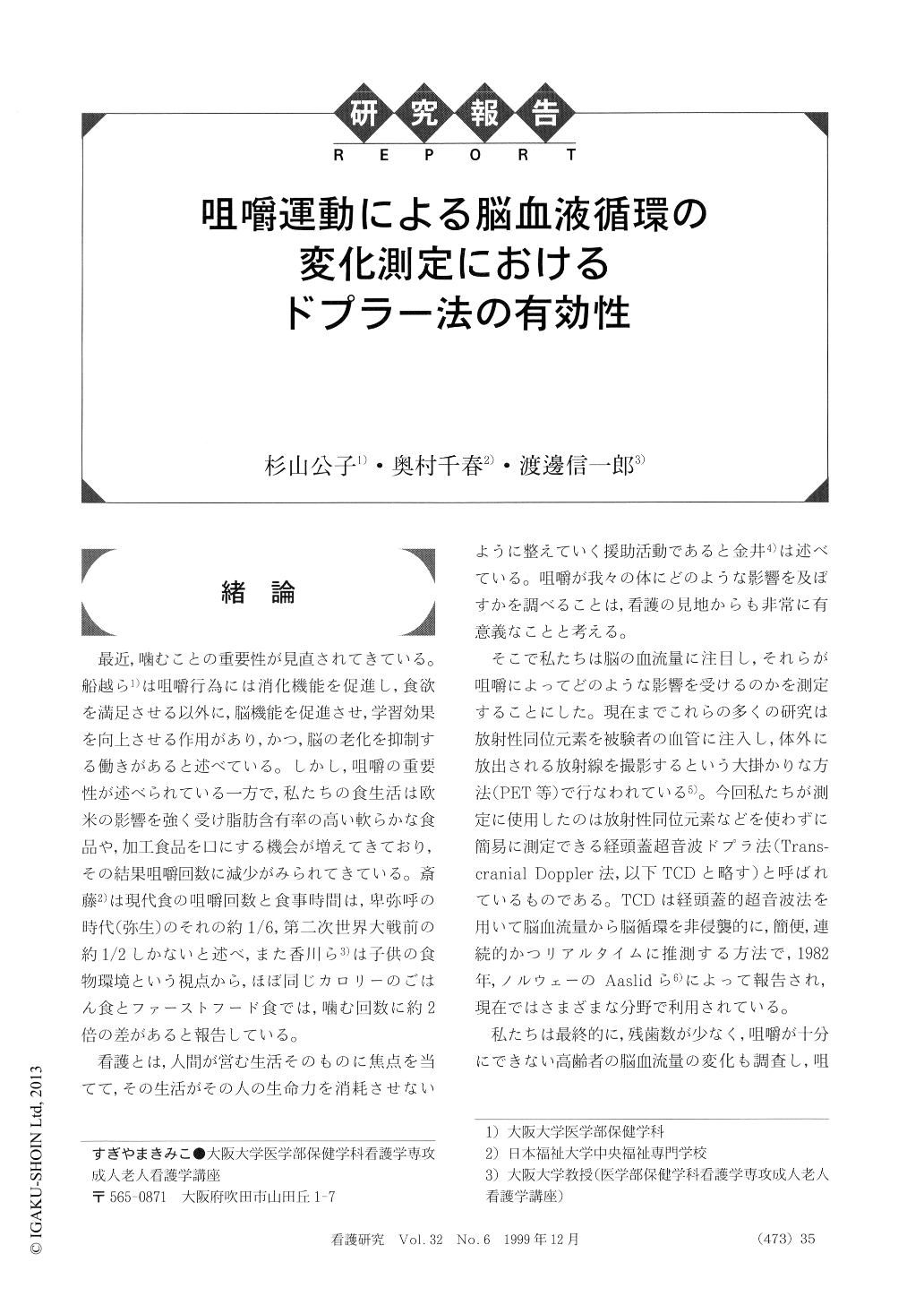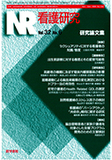Japanese
English
- 有料閲覧
- Abstract 文献概要
- 1ページ目 Look Inside
緒論
最近,噛むことの重要性が見直されてきている。船越ら1)は咀嚼行為には消化機能を促進し,食欲を満足させる以外に,脳機能を促進させ,学習効果を向上させる作用があり,かつ,脳の老化を抑制する働きがあると述べている。しかし,咀嚼の重要性が述べられている一方で,私たちの食生活は欧米の影響を強く受け脂肪含有率の高い軟らかな食品や,加工食品を口にする機会が増えてきており,その結果咀嚼回数に減少がみられてきている。斎藤2)は現代食の咀嚼回数と食事時間は,卑弥呼の時代(弥生)のそれの約1/6,第二次世界大戦前の約1/2しかないと述べ,また香川ら3)は子供の食物環境という視点から,ほぼ同じカロリーのごはん食とファーストフード食では,噛む回数に約2倍の差があると報告している。
看護とは,人間が営む生活そのものに焦点を当てて,その生活がその人の生命力を消耗させないように整えていく援助活動であると金井4)は述べている。咀嚼が我々の体にどのような影響を及ぼすかを調べることは,看護の見地からも非常に有意義なことと考える。
In this study, we tried to study the effect of mastication movement on the brain function in humans.
For that purpose, the relation between mastication and cerebral blood flow was studied in twenty young peoples averages 26.1 y. o. applying the transcranial doppler method (TCD, Multi-DopX DWL Ltd.) to detect blood flow in the middle cerebral artery (MCA). At the same time, we checked blood pressure and pulse rates (Space Labs Inc) before and during chewing movement. The participants were given Glico Kiss Mine® Dentalcare gum to obtain mastication movement by chewing.
In results, it was possible to detect the MCA blood flow with TCD on all twenty individuals. The reproducibility of our data was confirmed by the repeat examination on twelve out of 20 individuals. The increase in the average MCA blood flow with chewing was 12.10%, in average pulse rates was 10.29%. The average systolic and diastolic blood pressure was 4.24% and 9.63% observed respectively, when they were compared before and during mastication movement. Their T-test were P<0.001, P<0.001, P<0.005 and P<0.001 respectively.
In conclusion, it was confirmed that using the TCD method an increment of cerebral blood flow by chewing occurred suggesting an increase in brain function by the mastication movement in young peoples as already shown by the PET scan.

Copyright © 1999, Igaku-Shoin Ltd. All rights reserved.


